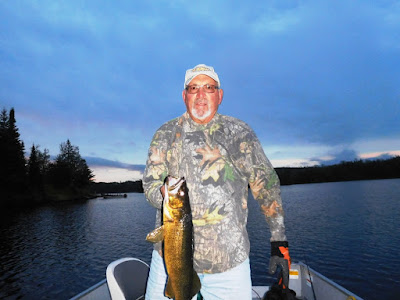 |
| Steam is rising from the lake each morning now |
 |
| MNRF boat at left is setting a net looking for trout |
They will harvest eggs and milt from wild lake trout, take them to the MNRF fish hatchery in Dorion, Ont., and raise the eggs to fingerling size before returning them in 18 months. Next year will be the last for the gathering of wild eggs. After 2017 they will simply get eggs from Red Lake trout that have been raised in the hatchery and kept as brood stock.
Weather plays an important role in how successful the egg gathering will be. The MNRF trouters are hoping for cold temperatures that will bring the lakers to the shallow shoals. When there is a decided cold snap, the trout come in masses and the whole egg project goes quickly, perhaps within a week.
Warm weather can prolong the project and if it is too warm the trout sometimes don't come to the shoals but skip spawning entirely. They end up re-absorbing their eggs.
Fortunately, the weather is turning cool. We had our first frost today. The water temperature still needs to drop a couple of degrees C to turn-on the fish. The trouters sampled a few shoals and have caught and released a couple of fish. They will be back Monday and will start work in earnest.







